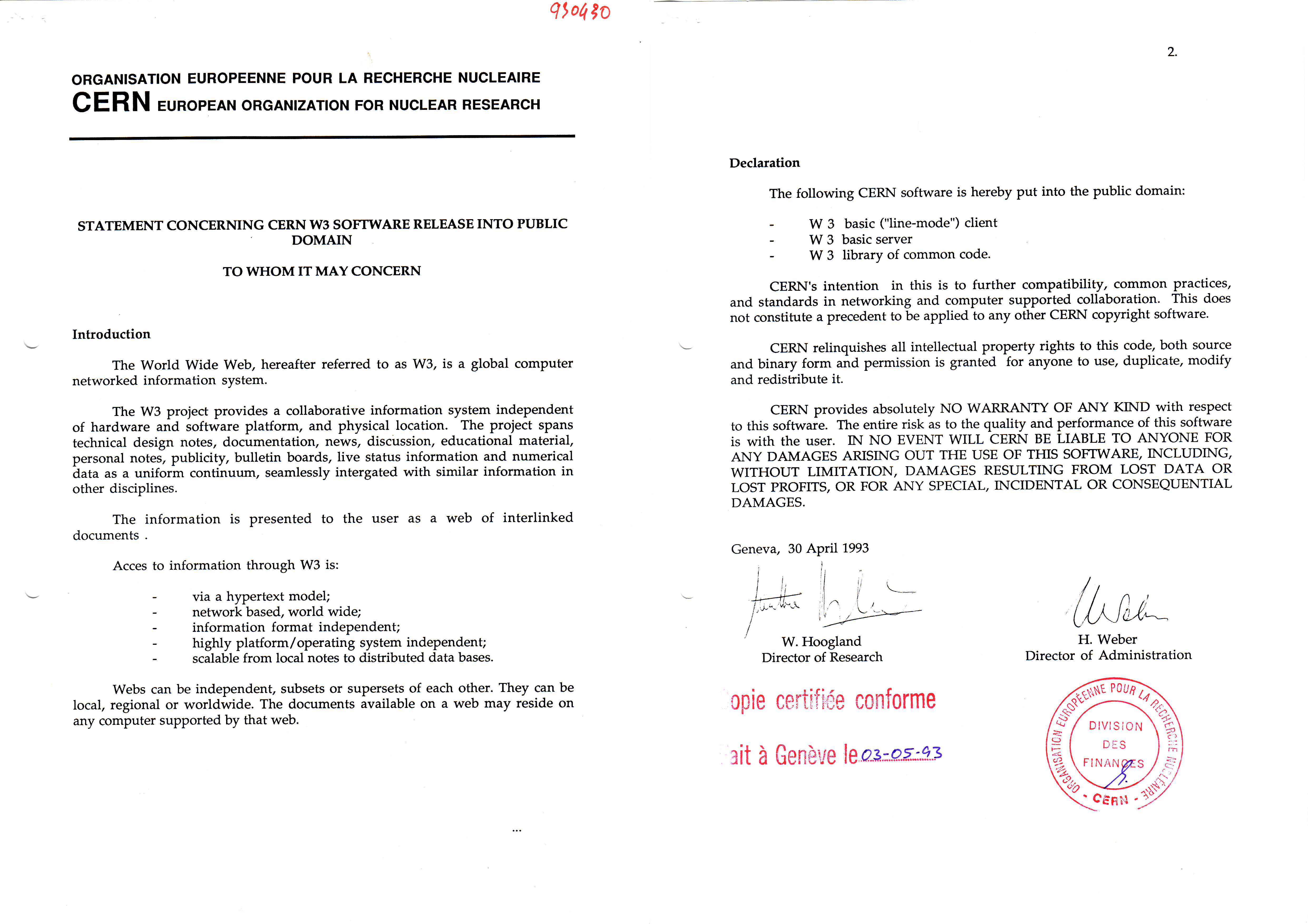
Exactly 30 years ago, on 30 April 1993, CERN made an important announcement. Walter Hoogland and Helmut Weber, respectively the Director of Research and Director of Administration at the time, decided to publicly release the tool that Tim Berners-Lee had first proposed in 1989 to allow scientists and institutes working on CERN data all over the globe to share information accurately and quickly. Little did they know how much it would change the world.
On this day in 1993, CERN released the World Wide Web to the public. Now, it is an integral feature of our daily lives: according to the International Telecommunications Union, more than 5 billion people, two thirds of the worldwide population, rely on the internet regularly for research, industry, communications and entertainment.
"Most people would agree that the public release was the best thing we could have done, and that it was the source of the success of the World Wide Web," says Walter Hoogland, co-signatory of the document that proclaimed the Web's release, "apart from, of course, the World Wide Web itself!"
Public domain: then and now
The release of the World Wide Web was launched by an internal document, addressed "to whom it may concern" and signed by Hoogland and Weber. Back In 1993, copyright licensing standards were in the very first stages of development. In this first release, the document states that "CERN relinquishes all intellectual property rights to this code, both source and binary form, and permission is granted for anyone to use, duplicate, modify and redistribute it."






